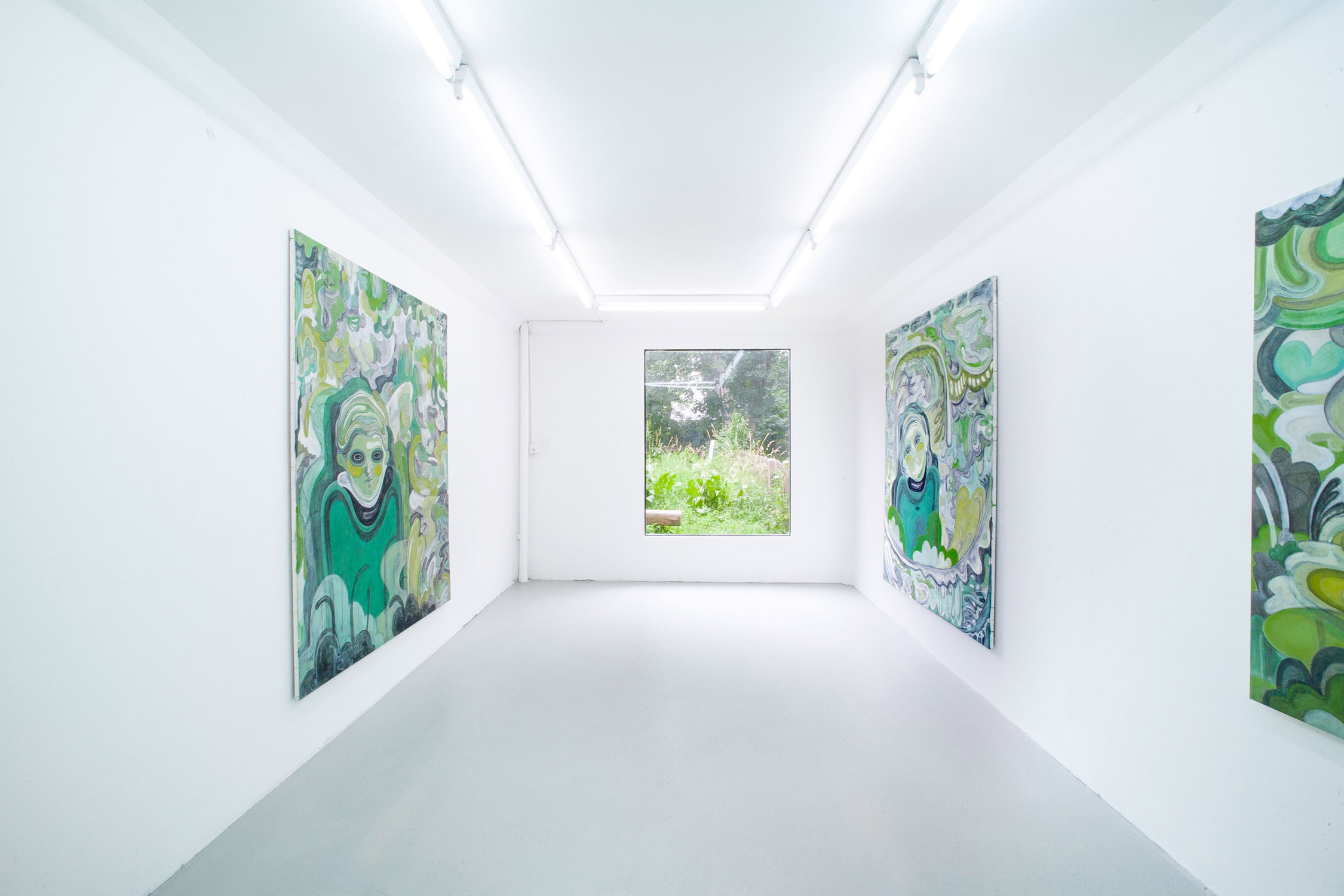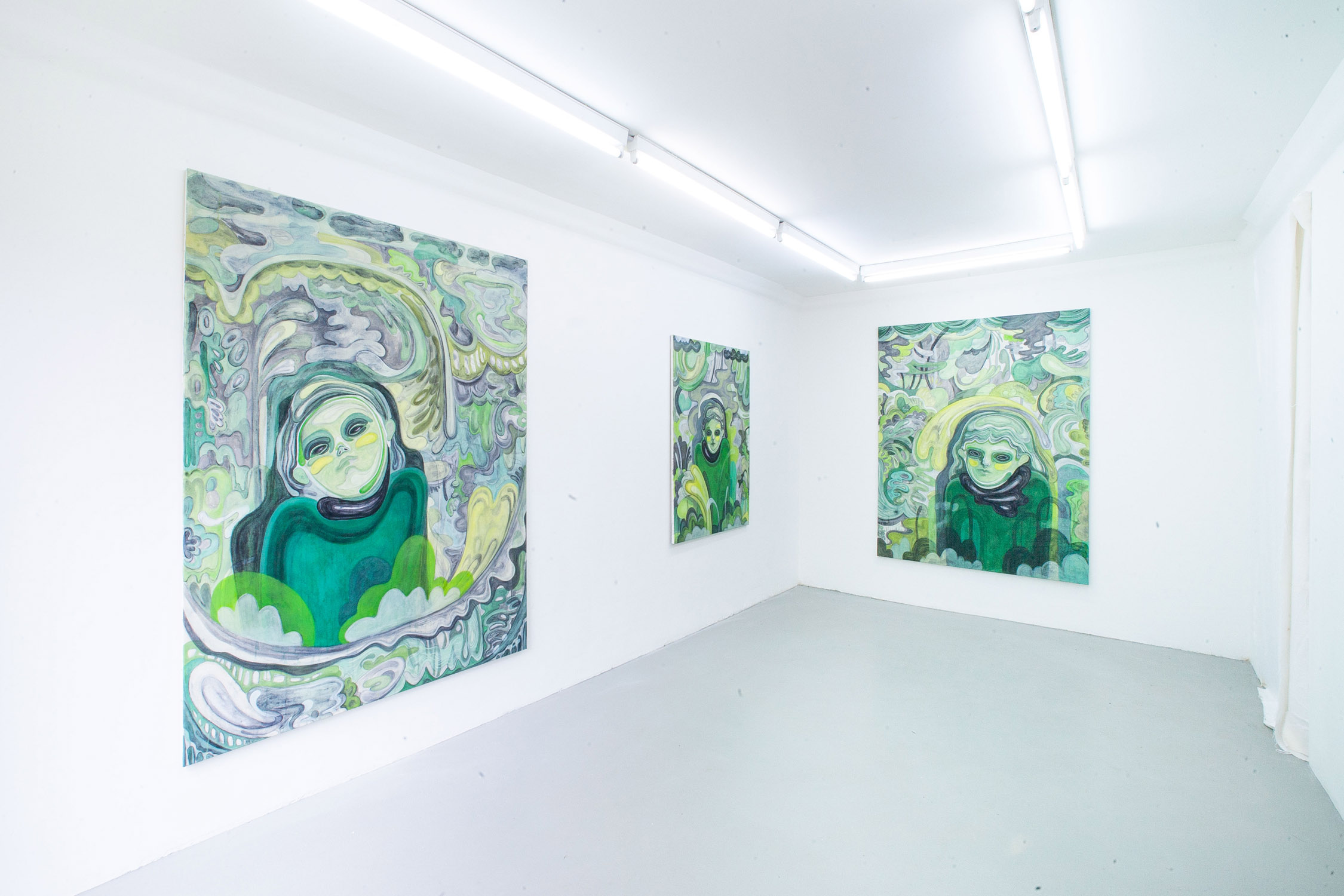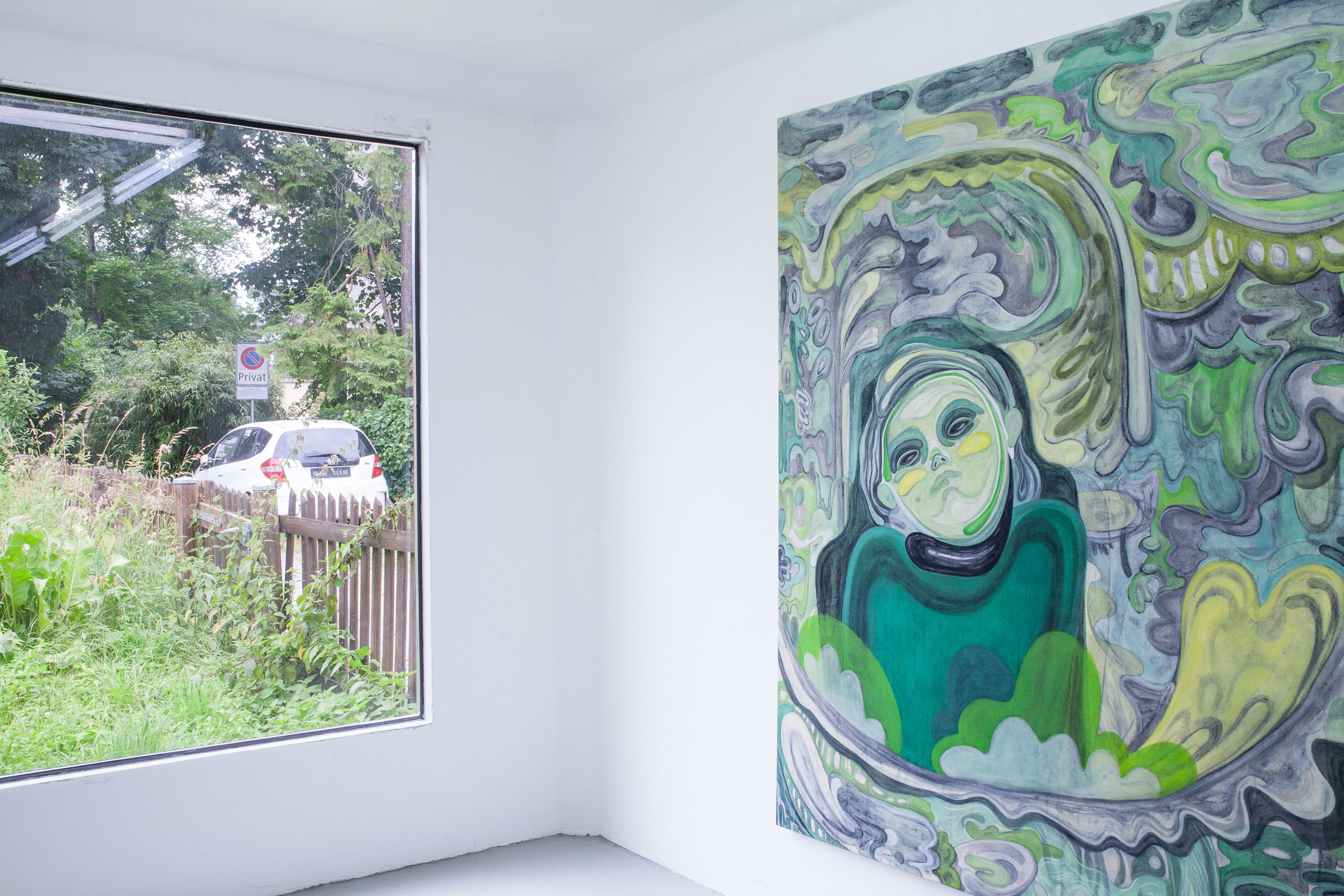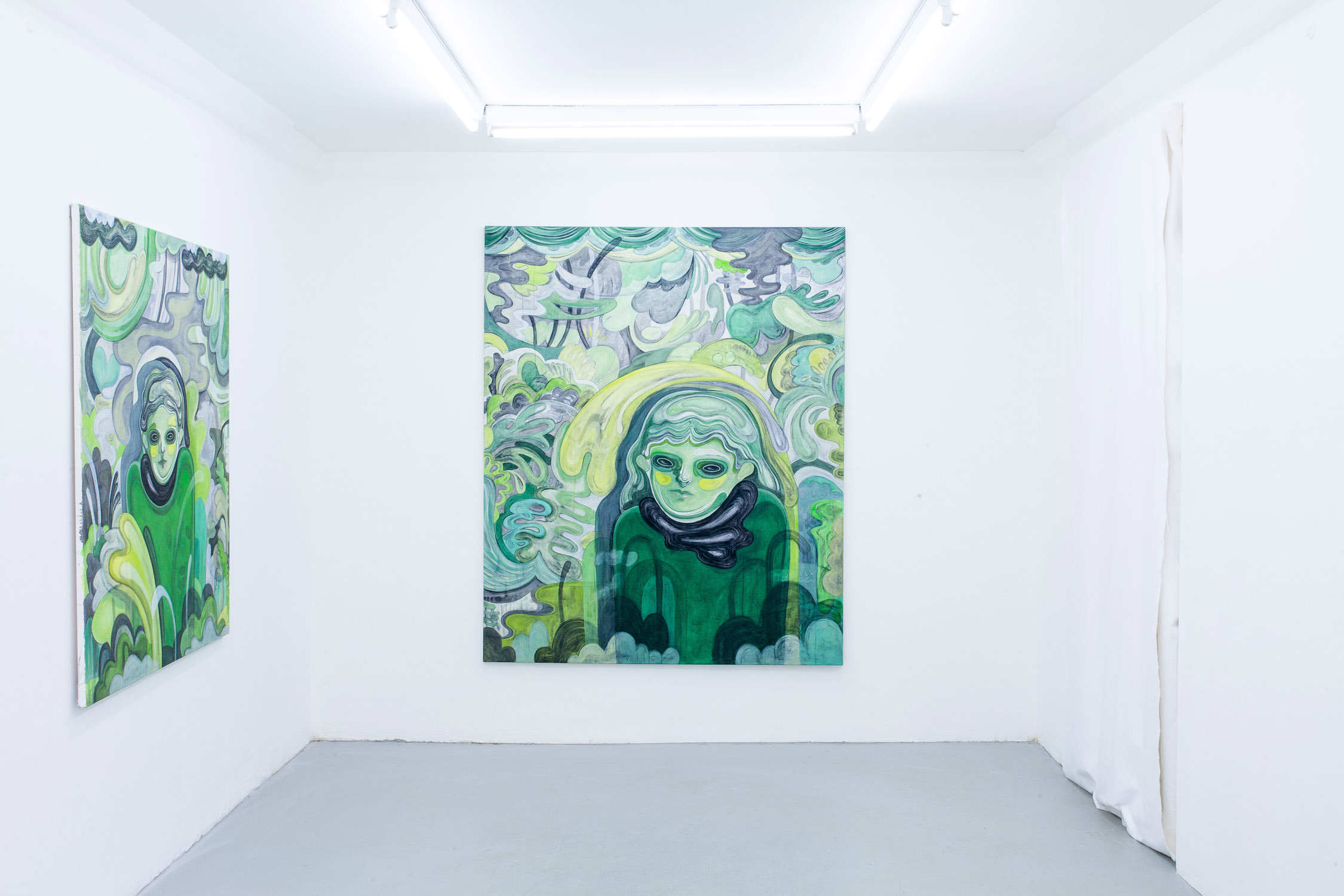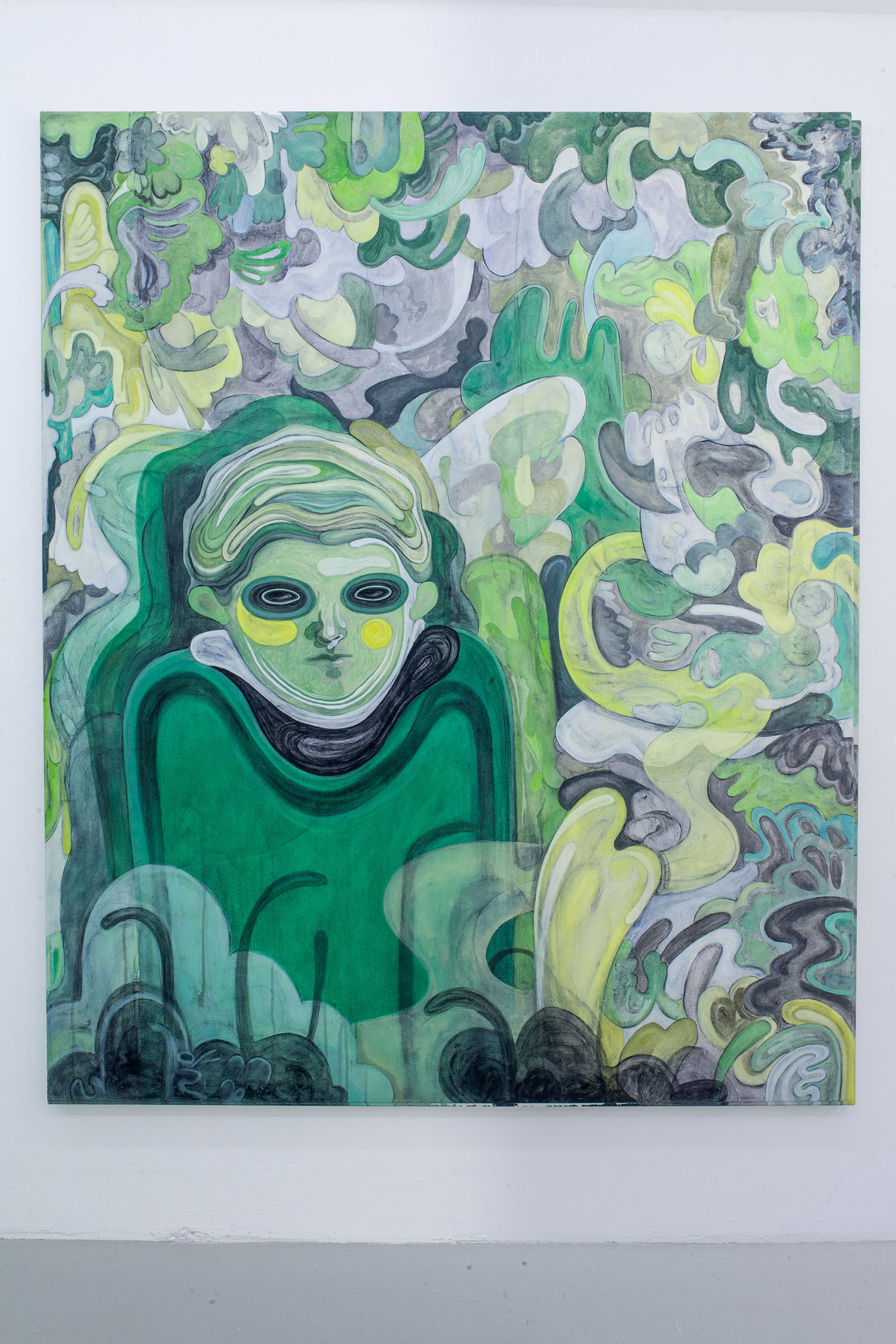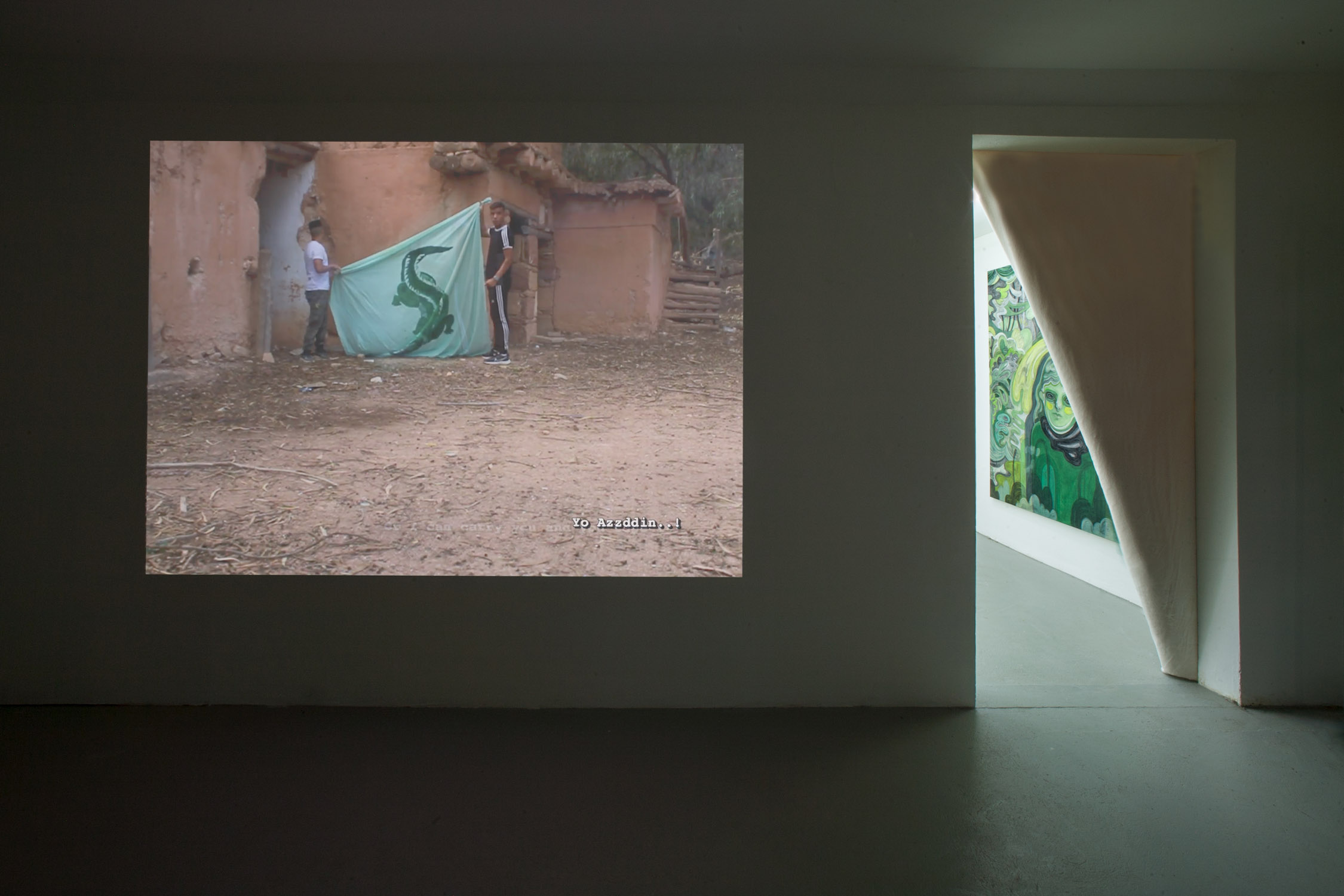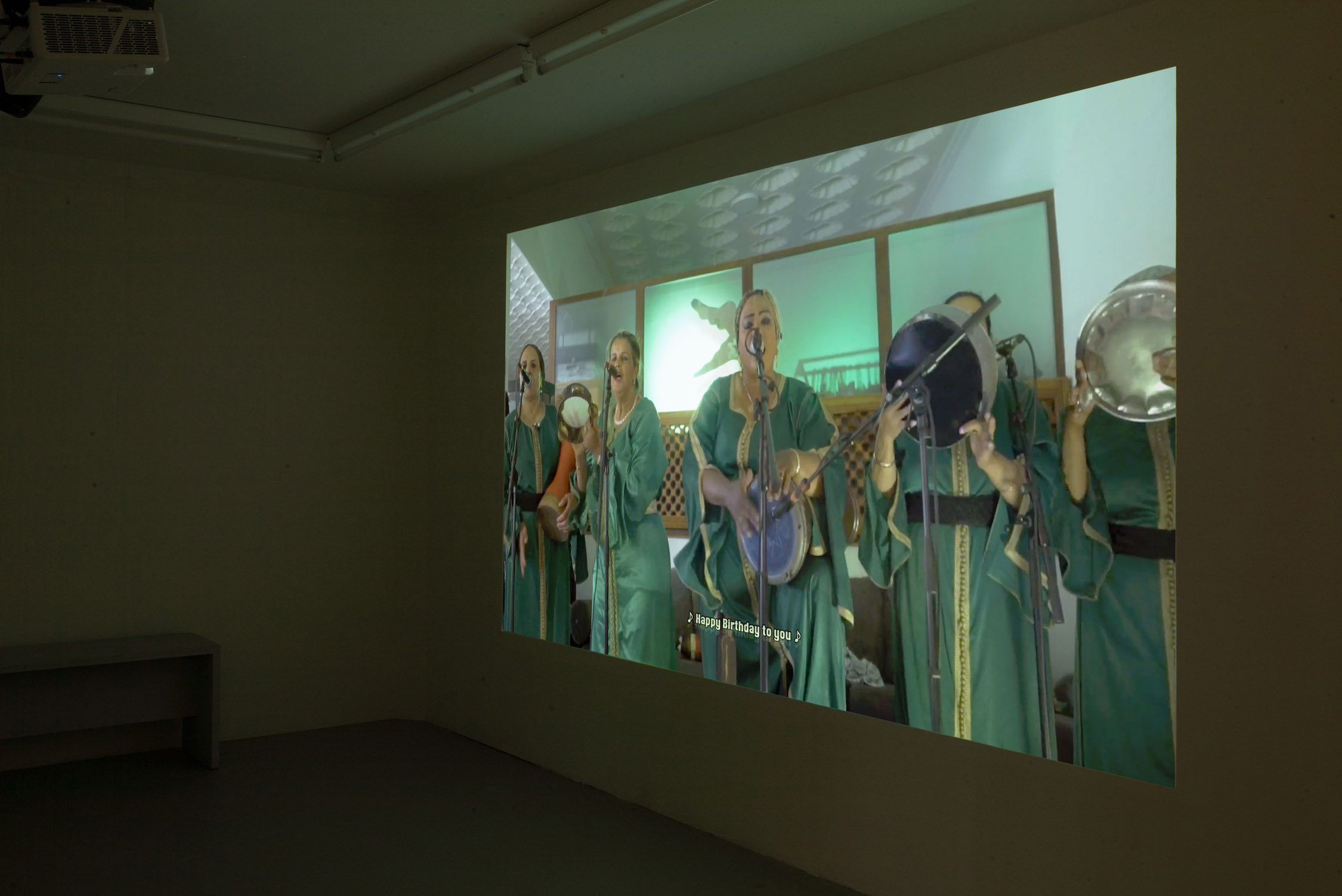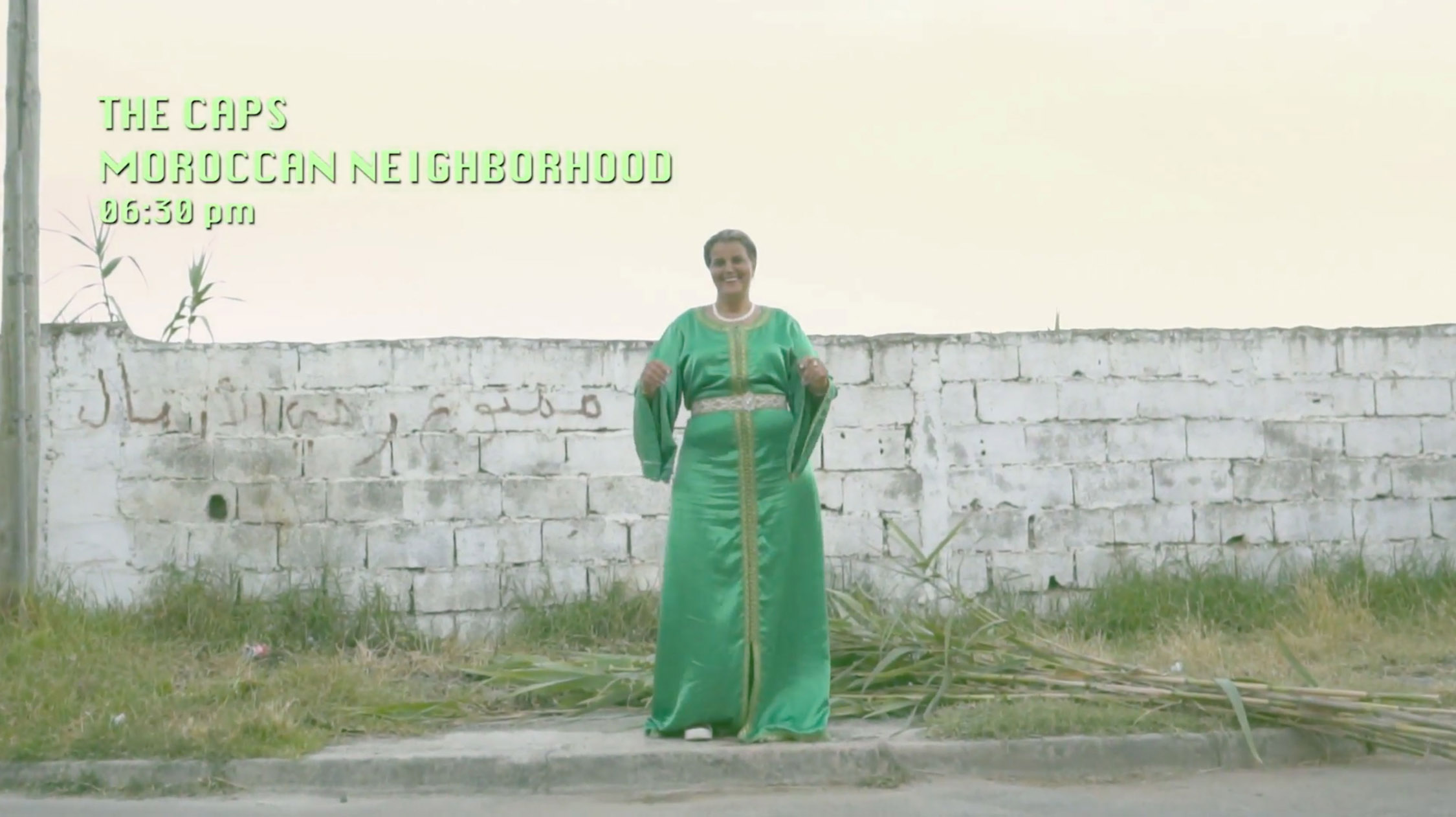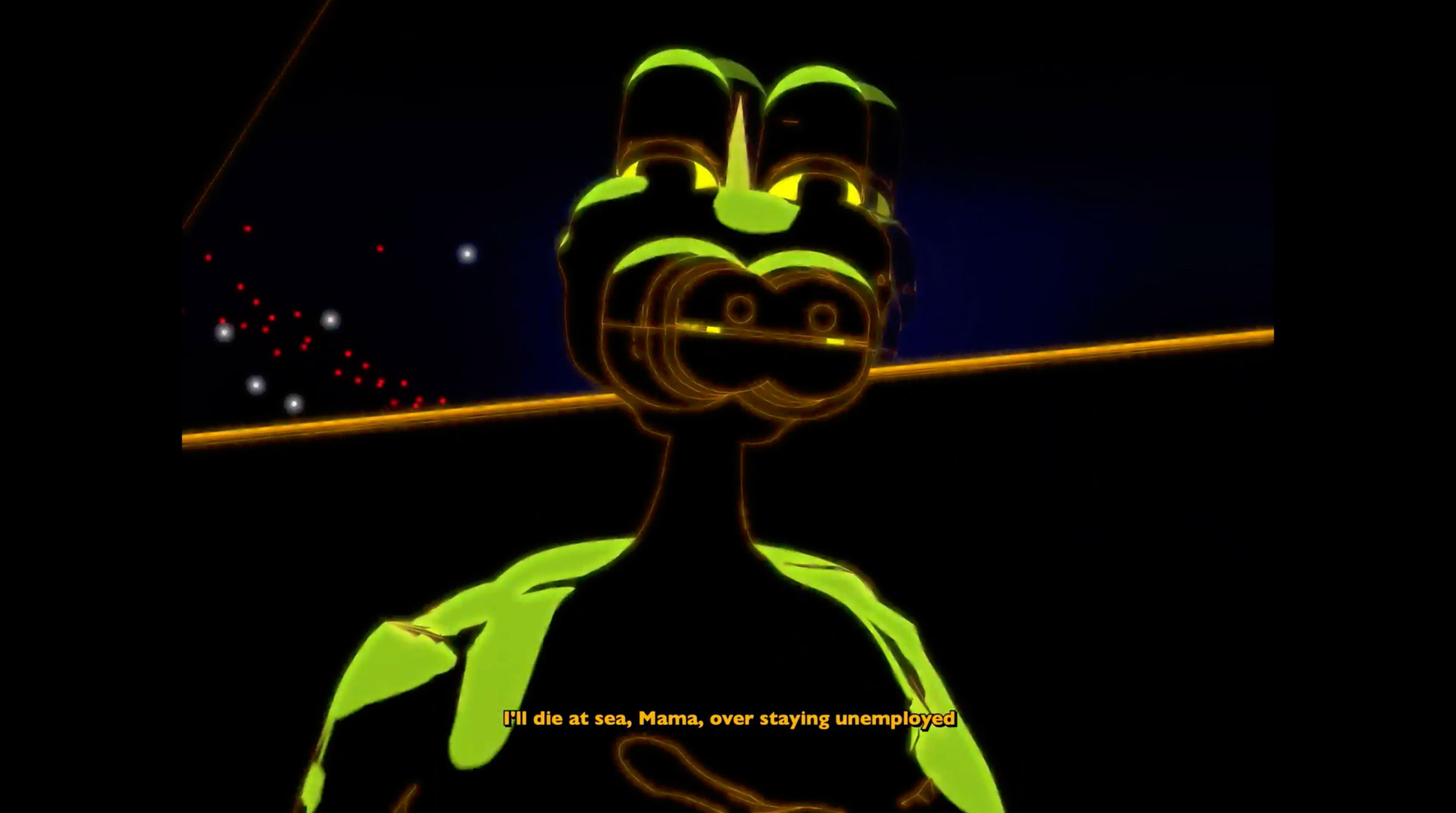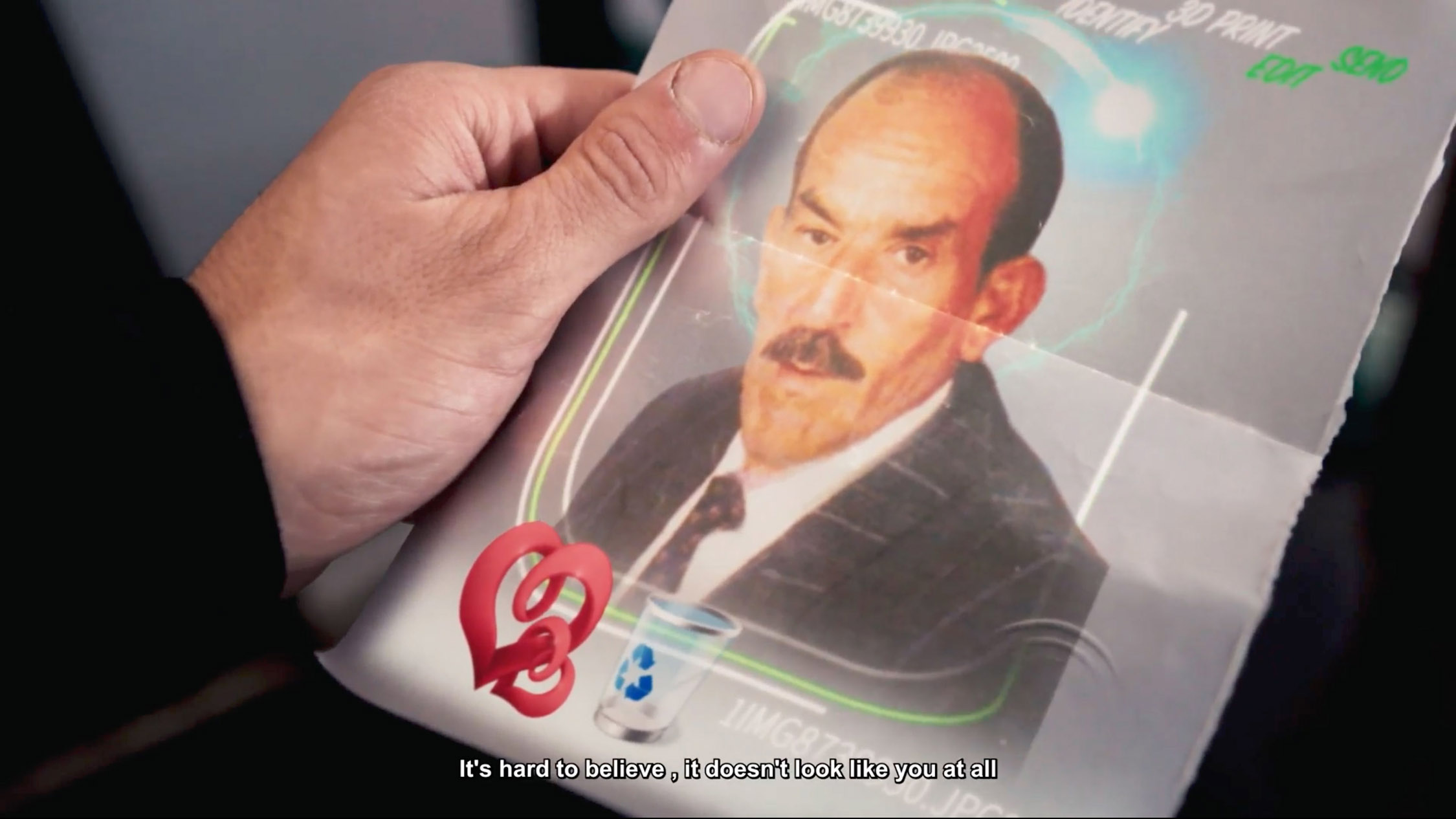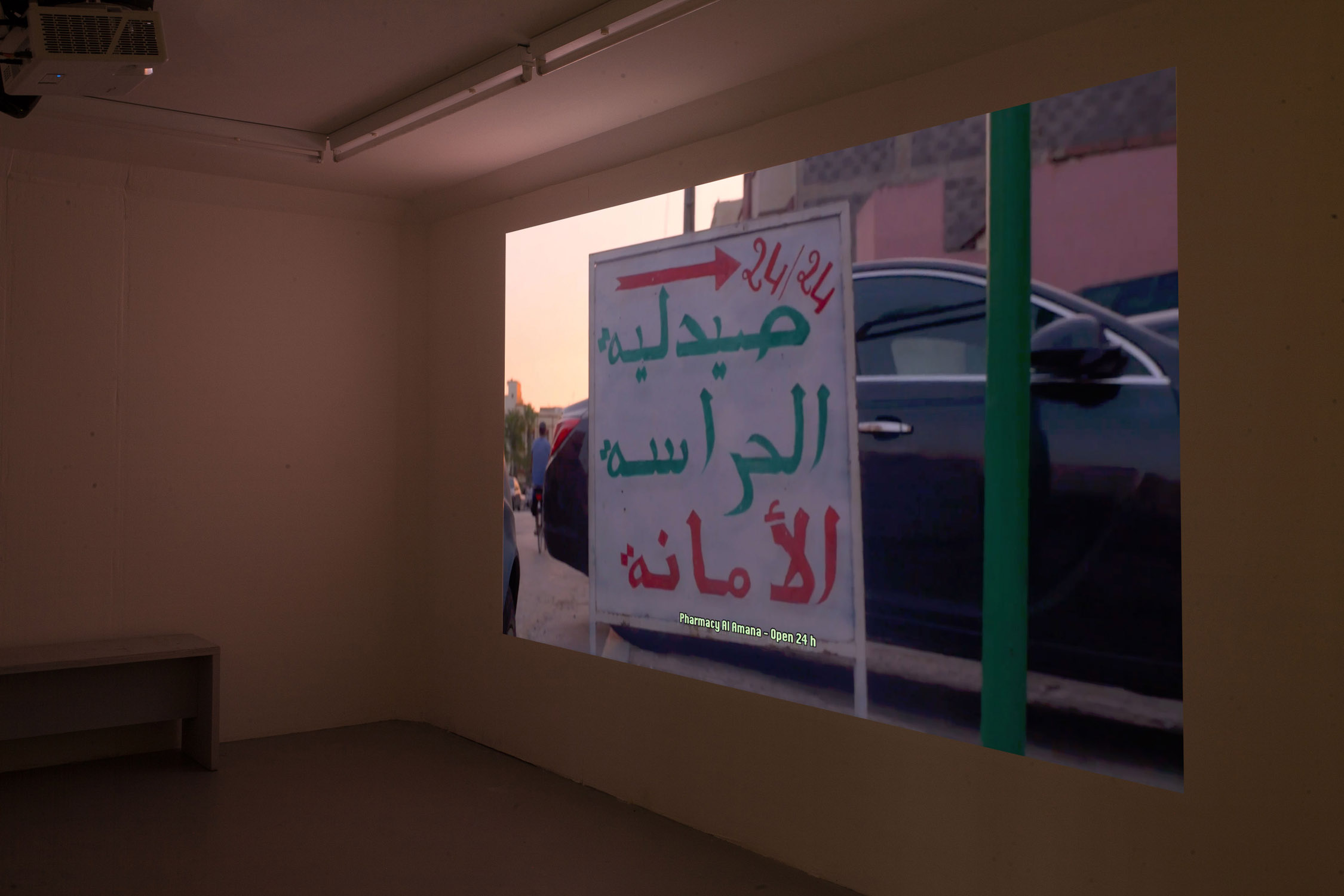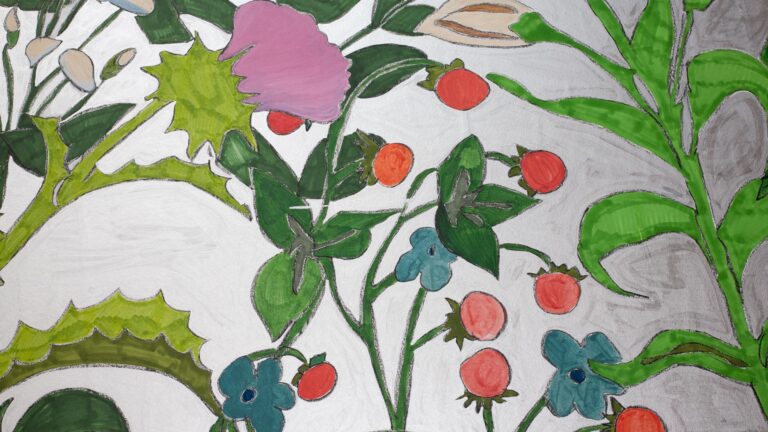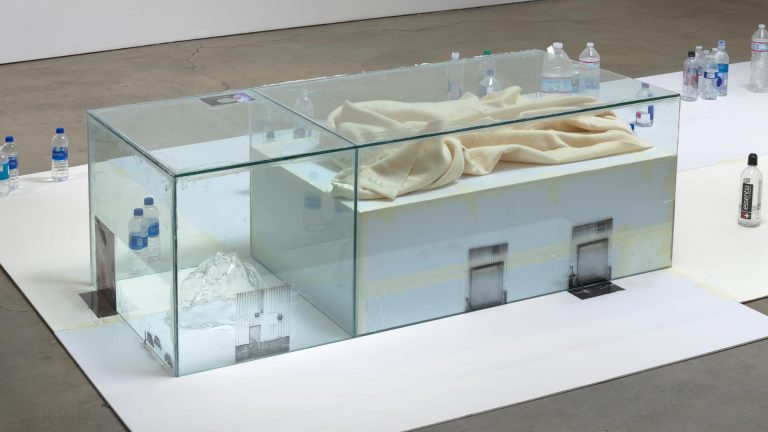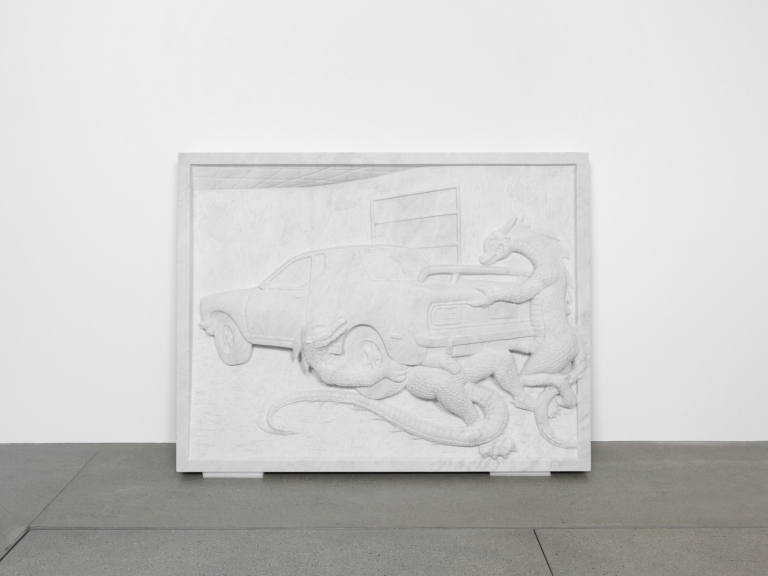Meriem Bennani’s videos and multimedia installations highlight the ways digital technologies, networks, and global consumption have transformed our lives, cultures, and relationships. Rasha Omar’s paintings depict the contrast between reality, such as wars and conflicts, and utopian dreams, reflecting her experience of living through war and seeking to move past it.
In the present time, amidst a tense world filled with pressures, conflicts, and wars, we find ourselves on an endless journey towards achieving inner peace and tranquility. This journey, which may stem from the instinct for self-preservation and internal defensive reactions, grants us psychological balance and the ability to continue living. I’ve lived through war and displacement, and these difficult experiences have been milestones in my journey towards a deep understanding of inner peace. I began to realize that “paradise” is a place that doesn’t exist; rather, it is an internal state we must strive diligently to achieve within ourselves. Therefore, through my painting, I seek to create imaginary worlds that represent ideal havens of perfection and express reflections and contemplations on conflicts. This vision is manifested in my works through an intense visual language, offering ideal solutions to the problem of evil and its consequences. I believe this can serve as a bridge to a state of peace and serenity.
Meriam Bennani uses digital media and docu-fiction to explore themes of displacement, biotechnology, and digital culture through this speculative, three-part project. Life on the CAPS centers on Capsule (CAPS), a fictional island in the Atlantic Ocean that originally served as an internment camp for people caught crossing international borders. Over time, the island’s captive population has evolved into a thriving metropolis where teleportation and changeable bodies are common, and diasporic traditions become forms of resistance. Developed during the recent pandemic, the CAPS film trilogy extends Bennani’s work on virtual representations of contemporary life. With friends and family playing versions of themselves, Bennani creates a digital distance to examine alienation, anxiety, and oppression caused by geopolitical powers, bodily limitations, and global media. The “Life on the CAPS” trilogy offers a modern allegory of the world, presenting alternative ways of navigating constant states of transition.
I am interested in archetypes of human behavior and ritual alongside the visual characteristics of contemporary digital media, testing the boundaries of what we regard as familiar or foreign, real or virtual. A lot of my work is motivated by the desire to understand my interest in these subject matters with sincerity. I try to focus on the politics that I feel, the ones I have a visceral, genuine and unresolved commitment in the hope to transcend the limitations of representational aesthetics. I usually can’t clarify why a subject is interesting to me at first, so then that effort to articulate an interest with as much precision as possible becomes the work itself. In that effort to understand and articulate thoughts around a subject that sometimes feels too complex or layered to summarize, I try to come up with new images, a new language that emerges from the complexity itself, one that does not rely on one specific genre or medium but rather on the collaboration of all. I am from Morocco, a place where the dialect itself is a mix of classical Arabic, Berber, French, Spanish. These constant linguistic and cultural clashes have shaped my work very deeply. Technology exists very organically in my work. Rather than a tool coming later into the process, it is the medium I write the work in. I consider that After Effects, Premiere and Cinema 4D are my mediums. Footage is raw material that I run through these programs and from this back and forth emerges a story manufactured on the computer. I often show my videos in multi-channel installations using projection mapping. Projection mapping allows me to edit in space and engage the body. All these elements serve the storytelling: I am interested in reaching people through their emotional intelligence and sense of humour. Those are timeless strategies that technology is allowing me to explore in personal and new ways.
